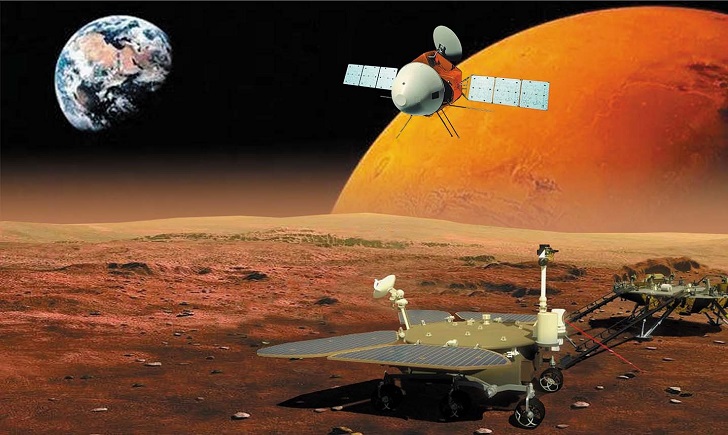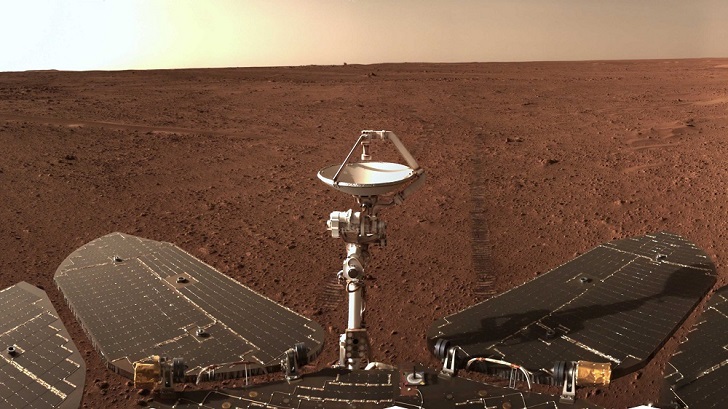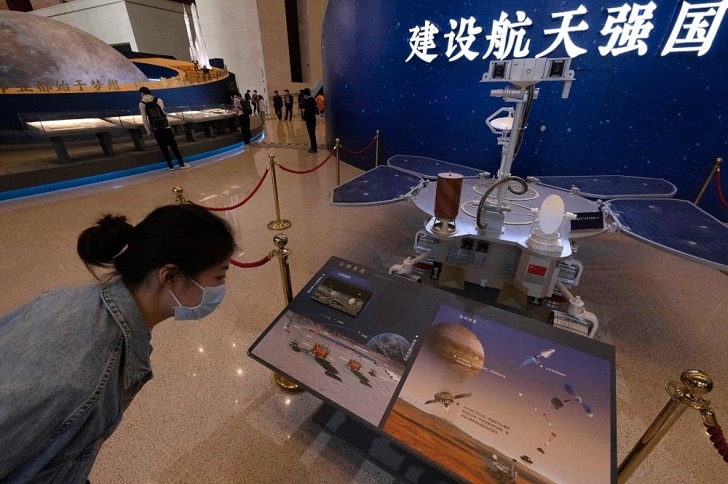On May 14, 2021, China made history by becoming the second country to successfully land and deploy a rover on Mars, with the landing of its Zhurong rover. The successful landing was a significant achievement for China’s space program and marked a major milestone in its efforts to explore the universe.
The mission has generated significant interest and excitement among the scientific community, as the Zhurong rover has the potential to unlock new insights into Mars’ geology and potential habitability.

Mission
Zhurong is named after a god of fire in Chinese mythology and is part of China’s Mars Global Surveyor Program. The mission of Zhurong is to study the geology and environment of Mars and search for evidence of past life on the red planet.
The rover will conduct various scientific experiments over 90 days, including taking images, analyzing soil and rock samples, and measuring the environment.
Design and Capabilities
China’s Zhurong rover is a six-wheeled robotic vehicle that weighs approximately 240 kilograms (529 pounds). It is equipped with a suite of scientific instruments designed to study the geology, soil, and potential habitability of Mars.
The rover’s mission is to explore an area of Utopia Planitia, a vast plain in the northern hemisphere of Mars, and search for signs of past or present life on the planet. The Zhurong rover is equipped with a variety of instruments, including a Mars-Orbiting Subsurface Exploration Radar (MOXIE).
This radar is designed to analyze the Martian soil and determine its composition, as well as a Mars Magnetometer (MM) to measure the planet’s magnetic field. It also has a multispectral camera and a laser-induced breakdown spectroscopy instrument to analyze the chemical composition of the rocks and soil on Mars.

Zhurong’s Landing
The landing of Zhurong was a complex and risky operation with many challenges. The landing process, known as the “Seven Minutes of Terror,” involves a series of critical steps, including atmospheric entry, parachute deployment, and powered descent.
The entire landing process is automated and takes place in just seven minutes, during which time the rover must navigate the challenging Martian terrain and safely land on the surface.
Zhurong’s landing was remarkable, as China had never attempted a Mars landing. The landing site, Utopia Planitia, was chosen for its relatively flat terrain and potential for scientific discovery. The landing was successful, and Zhurong sent its first images back to Earth within hours.
Zhurong’s Scientific Discoveries
Zhurong’s scientific discoveries could have far-reaching implications for our understanding of Mars and the search for life beyond Earth. One of the mission’s key objectives is to search for evidence of past or present life on Mars.
Zhurong’s instruments will analyze soil and rock samples for signs of organic molecules, which could indicate the presence of life. Zhurong will also study the geology and environment of Mars, providing insights into the planet’s history and potential for habitability.
The rover will use its ground-penetrating radar to study the subsurface of Mars and determine the composition of the Martian soil and rock layers.
Significant impacts made by this invention

The successful landing of Zhurong marks a significant milestone for China’s space program and could potentially have far-reaching implications for the scientific community.
The mission will provide valuable data and insights into Mars’ geology, environment, and potential for life. The successful landing of Zhurong is also a significant achievement for China’s space program, demonstrating the country’s growing capabilities in space exploration.
Zhurong’s landing also highlights the increasing competition in space exploration, with China, the United States, and other countries vying for dominance. As more countries invest in space exploration, we can expect to see further technological advancements and a greater understanding of our place in the universe.




